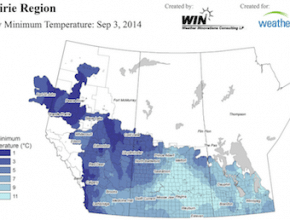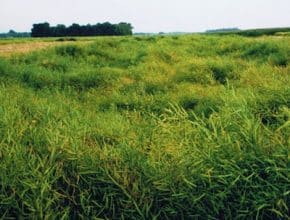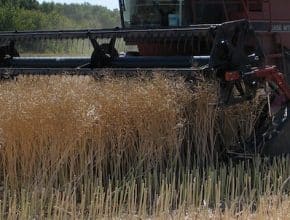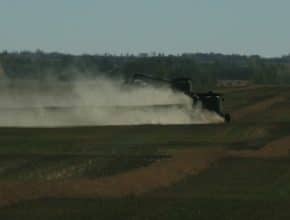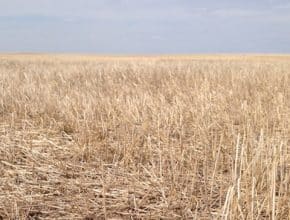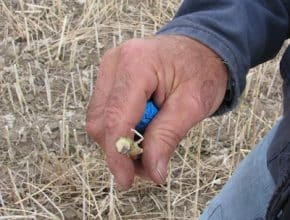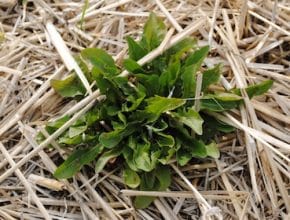It’s complicated. We’ve said over and over to swath when the main stem reaches 60% seed colour change, and when seeds on side branches are "firm to roll" as shown in the video above. But the decision when to swath is often much more difficult — especially with the advancing calendar, disease pressure and lodging. Straight goods. Straight combining canola…
September 4, 2014 - Issue 22
-
-
-
It pays to know how much canola your combine is throwing over. Test your harvest loss management skills…
-
The ideal swath timing is when 60% of seeds on the main stem are showing some colour change from green to brown. However, various factors complicate the swath timing decision, including frost and uneven crops due to hail. A few other scenarios surfaced this week, including late starts, disease and lodging (shown above)…
-
-
Growers have three steps to assess combine losses: 1. Measure the losses. Drop pans are required, given that combine loss monitors are not always accurate or calibrated properly. How to measure losses. 2. Determine whether those losses are acceptable. 3. If not acceptable, take measures to reduce the losses. Les Hill is the manager of technical services and business development…
-
An important factor in canola stand establishment next spring is the crop residue situation this fall. An even mat of cereal residue is preferable to clumpy distribution that can affect drill performance, seed survival and overall crop uniformity next year. Fall is the best time to make sure residue is spread evenly. A properly adjusted combine straw chopper and spreader…
-
1. Assess the disease situation. 2. Consider disease severity when choosing varieties. 3. Recognize which issues were agronomic versus environmental. 4. Evaluate variety performance. 5. Manage residue with the combine. 6. Identify weeds before making fall weed control decisions. 7. Manage volunteer canola. (Key is to prevent losses in the first place.) 8. Count stems after harvest. 9. Do a…
-

